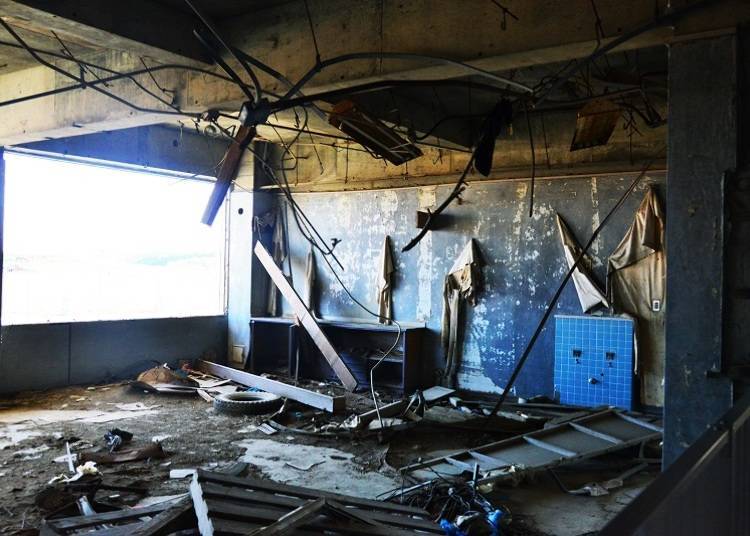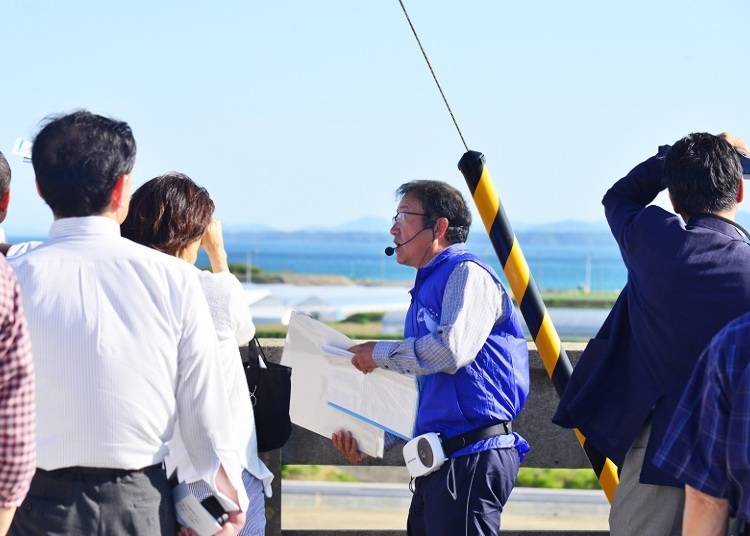
On March 11, 2011 at 14:46, the largest earthquake ever recorded in history hit Miyagi Prefecture with a magnitude of 9.0.
On March 10, 2019, eight years later, Kesennuma City turned the old school building of Kesennuma Koyo High School, which was heavily damaged by the tsunami and left in remains, into a memorial hall to share the memories and lessons from the earthquake, and opened the Kesennuma City Memorial Museum.
It has attracted attention as a facility that will continue to convey the fearsome power of earthquakes and tsunamis to future generations.
- Table of Contents
-
- Kesennuma Koyo High School: On the day of the earthquake, many students and teachers had stayed behind even after finishing their classes
- The Importance of Disaster Prevention for Future Generations in Kessenuma
- A Classroom Littered with Rubble and Cars
- Rooftop Overlooking the Sea: The Last Stronghold During the Earthquake
- Back On The First Floor: Tour of Indoor Playground and North Building
Kesennuma Koyo High School: On the day of the earthquake, many students and teachers had stayed behind even after finishing their classes

At the time of the earthquake, classes at Kesennuma Koyo High School had already ended, but about 170 students remained for club activities.
The earthquake completely disrupted the peaceful after-school scene. The students were immediately evacuated to higher grounds under the guidance of the faculty and staff, and some staff brought important school documents to the 4th floor of the building.
Kesennuma Koyo High School is about 500 meters from the sea. You can see the beautiful blue sea and green pine forest from the second floor. The surrounding area was once and an expansive coastal landscape full of homes and factories, but the tsunami uprooted all of this, even reaching up to the 4th floor of the school building with powerful momentum.
The Importance of Disaster Prevention for Future Generations in Kessenuma

“At that time, there were about 170 students in the school, but fortunately, there were no victims,” says Katsumi Sato, the museum's director.
“Daily awareness of disaster prevention has strongly increased. As you can see from the building, the damage of the tsunami was astounding. However, the actions of the teachers and students who did not give up and saved potential victims will also be passed on to future generations, along with the increased awareness of disaster prevention.”
For this purpose, the first thing you see in the Kesennuma City Memorial Museum is a video of the earthquake in the video corner. The images projected on the 300-inch large screen realistically convey the strength, size, and fear of the tsunami.
After deepening your understanding of the damage caused by the tsunami, you are brought to the school building, still intact from the way it was left during the earthquake.
A Classroom Littered with Rubble and Cars

You can visit the 1st, 3rd and 4th floors of the school building. First, you walk along the first-floor corridor, seeing each classroom. Steel frames are exposed, and broken windows remain as they are.
Scattered debris littler the ground, including iron, wood, and even objects like electrical appliances. The ocean breeze carries the scent of the sea in through the window, almost as a reminder that the building stands only 500 meters away from it... and of the fearsomeness of the tsunami.
When I went to the 3rd floor, a flipped-over car leaned against the classroom wall, having been carried in by the tsunami. The highest point of the tsunami was the 4th floor, and even the large iron letterboxes in the classrooms show obvious signs of rust from where the tsunami had flooded.
Rooftop Overlooking the Sea: The Last Stronghold During the Earthquake

I could see the Pacific Ocean when I went up to the roof. Right at the top of the stairs, desks are placed, reproducing the scene at the time of the earthquake.
The faculty and staff, who predicted that the tsunami would reach the rooftop, used these desks, as well as stepladders that were being used for construction, to evacuate further up the rooftop.
Each affected classroom has a comment board with a QR code. If you scan the QR code, you can read explanations in English, Chinese, Korean, and Indonesian. The notice on the roof tells about the evacuated teachers and construction personnel at the time.
Back On The First Floor: Tour of Indoor Playground and North Building

After passing the indoor playground, where the roof is now gone, you will see the white walls of the north school building.
Proceed along the hallway and return to the main building’s video exhibition. Here you will watch a documentary that focuses on three victims who live in Kesennuma City.
You will listen to four heart-wrenching stories from those who lost beloved family members in the tsunami, and junior high school students reading messages at their graduation ceremony that had been postponed due to the earthquake.
There is a 90-minute “Storyteller Guide” guided tour (6000 yen for groups of 1~20 people, reservation required) for those who want to know more about the earthquake and the memorial hall.
The best way to access the Kesennuma City Memorial Museum and Ruins of Koyo High School is by public transportation. It takes about 3 minutes by taxi from JR Rikuzen-Hashikami Station, and about 20 minutes on foot.
-
Ruins of the Greal East Japan Earthquake Kesennuma City Memorial Museum気仙沼市 東日本大震災構・伝承館
- Address 9-1 Hajikamisemukai, Kesennuma-shi, Miyagi-ken
- Phone Number 0226-28-9671
Business Hours: 9:30AM~5:00PM (9:30AM~4:00PM from October~March)
Admission: 600 yen
Regular Holidays: Mondays (closed the following day in the event of public holidays)
Text by: SHOE PRESs
- Area
- Category
*Prices and options mentioned are subject to change.
*Unless stated otherwise, all prices include tax.
Popular Tours & Activitiess
Recommended places for you
-

Lake Tazawa
Rivers, Lakes & Canyons
Surrounding Areas Of Akita
-

Sannai-Maruyama Site
Village Ruins
Aomori, Hirosaki And Hachinohe
-

Aomori Nebuta Festival
Japanese Festivals (Matsuri)
Aomori, Hirosaki And Hachinohe
-

Sado Gold Mine
Winter
Niigata And Sado
-

Aquamarine Fukushima
Zoos, Aquariums & Botanical Gardens
Fukushima, Koriyama And Iwaki
-

Namahage Museum
Other Museums
Surrounding Areas Of Akita
-

Dining in Yamagata: Must-Try Foods & Top Restaurants Near the Station
by: ShiroKu inc.
-
Ad

Why Fukushima is the Next Big Food Destination in Japan The Foodie Paradise Only 90 Minutes from Tokyo
-

Shopping in Niigata: 9 Must-Buy Souvenirs & Local Sake to Take Home
by: ShiroKu inc.
-

What to Buy in Aomori? 11 Aomori Souvenirs Locals Actually Recommend
by: ShiroKu inc.
-
Ad

Advice from the Experts at Hitohira: Here's How to Choose the Best Japanese Knife
-
Ad

Just one stop from Haneda Airport! "Truly Japanese!" Food, Fun, and Knowledge Gather at HICityⓇ Enjoy An Electrifying Night at "Japan Night Fever: Haneda Innovation City"
by: Yohei Kato
-

Sendai Umino-Mori Aquarium: Inside Northeast Japan's Largest Aqua Attraction
-

50% Off Shinkansen Tickets?! 'Osakini Tokudane Special' Has Been Extended – Now for Gran Class Too!
-

Iwate Prefecture Guide: Destinations, Activities, Travel Advice, Shopping & More
by: Hiroko Ariga
-

Niigata Bucket List: 26 Best Things to Do in Niigata Prefecture For Tourists (Attractions, Local Foods & Activities)
-

Bucket-list Worthy Places in Japan's Scenic Northeast
by: Steve Csorgo
-

Akita Prefecture Guide: Destinations, Activities, Travel Advice, Shopping & More












